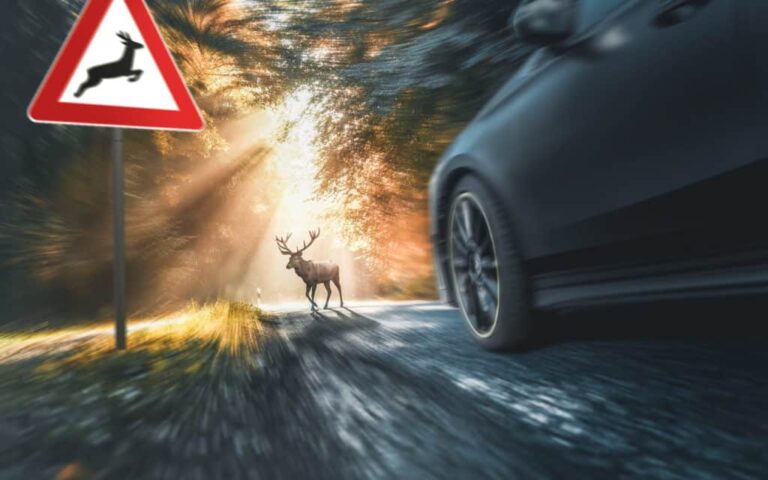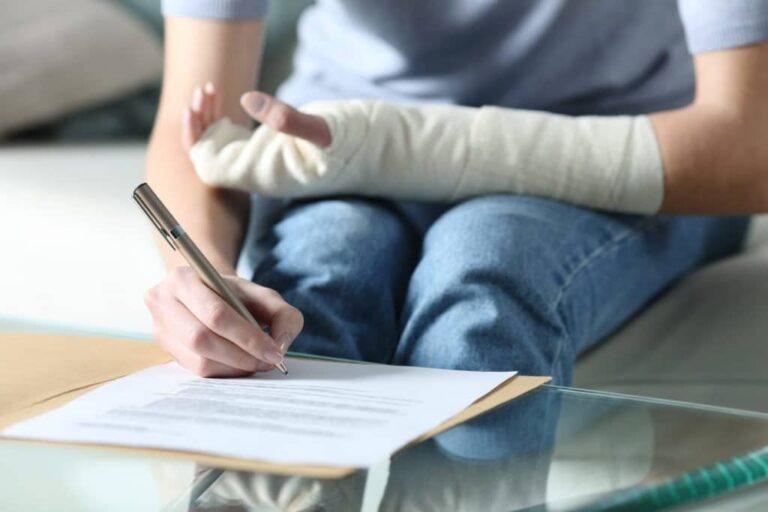After a car accident, there are a variety of different methods that can be used to help determine who was at fault for the collision. The location of the vehicle damage may be significant to both determining fault and your claim for recovery. This is because the position of vehicle damage can shed light on the circumstances leading up to the crash.
START YOUR FREE CONSULTATION
NO FEES UNLESS WE WIN!
In the United States, there are between 1 million and 2 million car accidents involving animals annually. These accidents resulted in over 26,000 injuries, 200 human deaths, and over $8 billion in property damages. Since 1990, the number of wildlife accidents has been increasing and, by 2004, represented over five percent of all car accidents.

Other factors associated with wildlife car crashes include:
- Animal-related accidents tend to occur in the early morning and evening hours between 5 a.m. and 9 a.m. and 4 p.m. and 12 a.m.
- Over 90 percent of wildlife vehicle crashes involve deer.
- Around 98 percent of crashes only involve a single vehicle.
- More wildlife accidents occur in the spring and fall when animals are moving around more due to hunting seasons, migration, and mating.
- Approximately 89 percent of animal accidents take place on two-lane roads.
- Wildlife accidents tend to occur most often on dry, straight roads.
Here in Nevada, there are more than 500 vehicle crashes involving animals each year with around $20 million in damages. Many of these accidents involve larger animals, including mule deer, antelope, elk, and bighorn sheep.
Impacts of Wildlife Crashes
Financial impacts are the most common result of animal-related vehicle accidents, including:
- Vehicle repair costs after hitting an animal
- Medical expenses from injuries sustained during the crash
- Disposal costs to dispose of the animal
- Property damage costs when the vehicle goes off the road
- Collision costs when the vehicle hits another car after hitting the animal
Travelers and tourists visiting Nevada can also experience indirect images when they are involved in a wildlife car accident. There can be travel delays caused by the accident incurring additional monetary costs.
In addition, there are impacts on the wildlife as well. Several endangered species are killed when attempting to cross roads, highways, and freeways. For example, the desert tortoise found in Southern Nevada is a threatened species most commonly killed in wildlife car accidents.
Reducing and Preventing Wildlife Crashes
The number of animal car crashes in Nevada can be reduced through prevention, education, and practicing safe driving habits. One prevention method that is helping decrease the number of accidents in Nevada is the installation of overpasses and underpasses in areas with a high number of wildlife accidents.
Overpasses and underpasses provide an alternative route for animals to use to keep them off roadway surfaces and away from vehicles. To further help direct animals to these locations, fencing can be installed that encourages them to use the safer crossing option.
12 Safe Driving Tips to Reduce Collisions with Wildlife
- Avoid driving drowsy or distracted. When you are not paying attention or drifting off to sleep, your risks of getting into a car accident are much higher.
- Do not drive if you have been drinking or using marijuana. These substances slow reaction times. Furthermore, if you are found to be impaired, you could be charged with a DUI.
- Always wear your seat belt to reduce the risk of serious injuries should you hit an animal.
- Pay attention to the road and sides of the road. Being aware of your surroundings helps let you know if you can safely swerve out of the way of the animal or be forced to remain in your lane and collide with it when you do not have time to stop.
- Reduce your speed in known and posted animal crossing locations. Slowing down can help increase reaction times so you could potentially avoid hitting an animal.
- Be aware of peak times when animals are more active.
- Use your high beams when it is safe to do so when driving at night. Your high beams will allow you to see further at night and spot animals on the side of the road or on the road.
- Avoid tailgating other vehicles to give yourself plenty of time to stop in case an animal walks out on the road.
- Deer, elk, antelope, and bighorn sheep tend to travel in groups. So, if you see one, chances are there are more nearby.
- Remain in control of your vehicle when you cannot avoid a collision. Apply your brakes to reduce your speed as best as possible while honking the horn to try to get the animal to move.
- Do not attempt to swerve out of the way unless it is safe, or you will collide with an elk or other large animal. Trying to avoid the animal could result in hitting another vehicle or causing you to lose control of your car.
- If you do hit an animal, stop and call 911. Reporting the accident allows the authorities to rescue and treat the animal, euthanize it when it cannot be saved, or safely dispose of the animal if it is already dead.

Who is responsible for my injuries in an animal-related car accident?
It will depend on whether you hit a wild or domesticated animal. For example, if you hit a deer and were injured, you would file a claim with your insurance provider for your injuries.
On the other hand, if the animal was a dog or cat, the pet owner may be partially or fully at fault for not properly securing their pet. As such, you may have grounds to file an injury claim against them and their insurance provider.
Furthermore, suppose you were hit by a driver of another vehicle who attempted to swerve and miss the animal and collided with you. In that case, you could potentially sue the driver and their insurance company for your injuries.
As you can imagine, accidents involving animals can sometimes be complicated. Therefore, consulting with an experienced car accident lawyer in Las Vegas is worth your time.
It costs nothing to speak with a lawyer to find out who is responsible for your injuries, and your legal options should have grounds to file an injury claim against another person. So if you or a loved one was injured in an animal or wildlife car accident, please schedule your FREE consultation with one of our car accident attorneys today.
Areas We Service in Las Vegas, Nevada
Las Vegas Strip | Henderson | Anthem | Summerlin | Paradise | Spring Valley | North Las Vegas | Summerlin North | Summerlin South | Sunrise Manor | Nellis AFB | Desert Shores | Downtown South | Charleston | Richfield | Crestwood | Angel Park Ranch | Queensridge | Casa Grande Pines | Winchester | West Las Vegas | Green Valley North | Lake Las Vegas | Sun City Summerlin | La Madre Foothills | Tule Springs | Mac Donald Highlands | Green Valley Ranch













